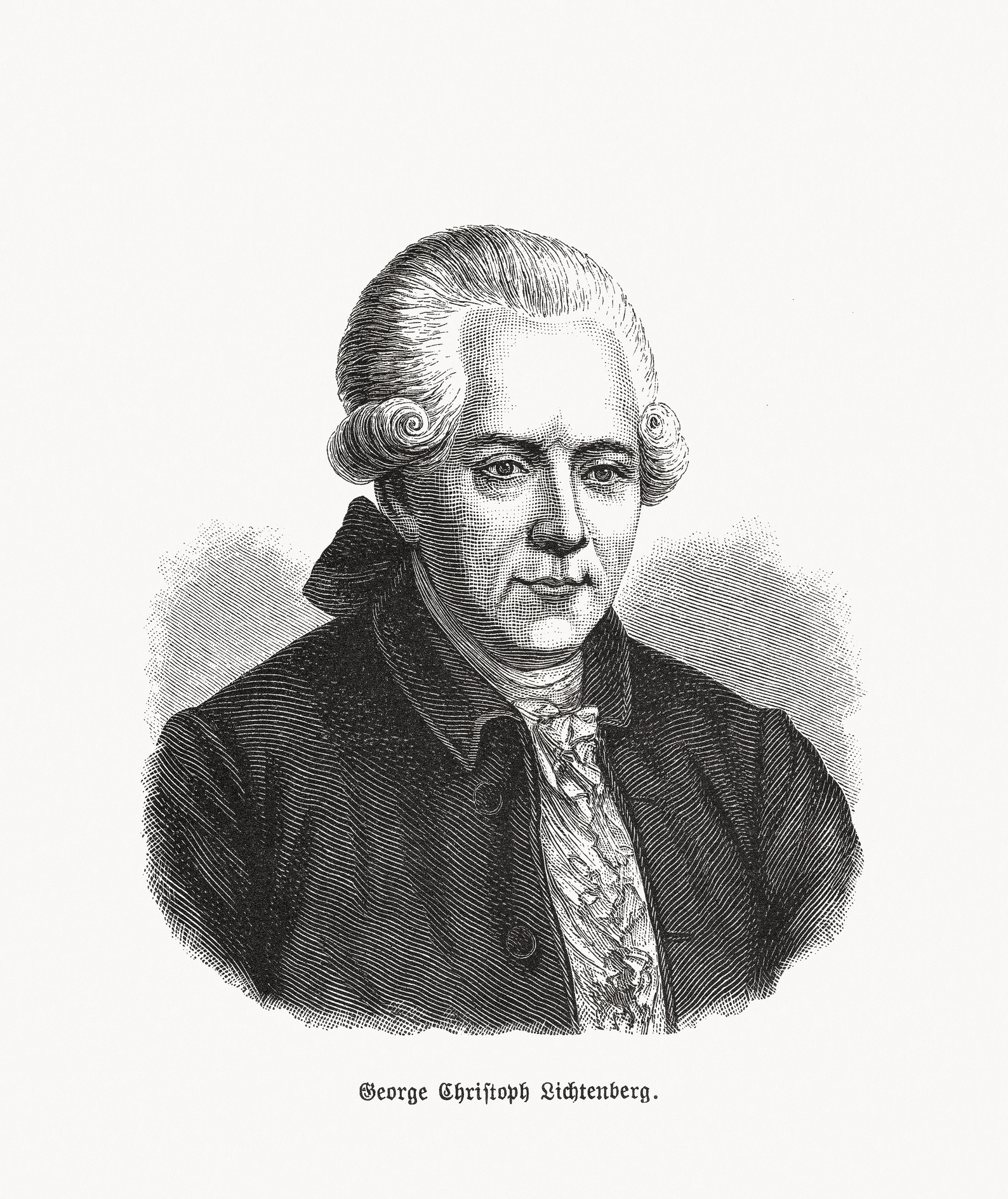Stories from the Cosmos: Georg Christoph Lichtenberg, an 18th-century influencer

Georg Christoph Lichtenberg was one of the most fascinating and least-known figures in the history of science. He was neither a Newton nor a Galileo, but he left his mark in fields as diverse as physics, philosophy, literature, and art. His legacy oscillates between electricity and irony, between mathematics and aphorisms, between the sparks of science and those of human ingenuity.
Lichtenberg lived in an era when lightning was still believed to be a divine punishment, but also when it was beginning to be understood as a physical phenomenon. Fascinated by electricity, he built one of the largest high-voltage generators of its time , capable of producing discharges that not only astonished, but also left mysterious dust-like figures on flat surfaces. These marks, with branching patterns resembling trees, lightning bolts, or neural networks, were the first visible traces of the behavior of electricity, and today we know them as Lichtenberg figures .
If you've ever seen an image of a discharge leaving its trace on skin or a block of acrylic, then you've contemplated the silent art of electricity frozen in time, a drawing that Lichtenberg was the first to observe with a scientific eye. He was also the one who introduced the symbols + and - into the science of electricity.
But this genius, far from staying locked away in his laboratory, was also a profound and provocative thinker. He kept a series of private notebooks, which he called Sudelbücher , literally "scrapbooks." In them, he jotted down reflections, philosophical questions, mockeries of superstitions, commentaries on science and society, and even ideas for future experiments. Many of these fragments have been published and celebrated by generations of writers and scientists. Arthur Schopenhauer, Sigmund Freud, and even Nietzsche confessed to being admirers of his famous aphorisms. One of the most famous states: "Nothing is more deceptive than an obvious fact," a warning that remains valid in the post-truth era.
Lichtenberg was also a pioneer in teaching, becoming the first professor of experimental physics in Germany and championing the use of the empirical method in a world still dominated by speculation. His lectures at the University of Göttingen were so popular that students filled the auditoriums, even without formal enrollment. Unlike many of his contemporaries, he did not speak from an unattainable pulpit, but with humor, with doubt, with the excitement of someone discovering alongside his students.

Lichtenberg figures, the first visible traces of the behavior of electricity. Photo: iStock
And he also had a very human, even tragic, side. Suffering from a young age from severe scoliosis, his hunched body contrasted with the lucidity of his thinking. He didn't take refuge in bitterness, but instead made his intelligence a beacon of light. He elegantly mocked religious dogma, political fanaticism, and pseudoscience, and on more than one occasion ironically debunked absurd theories, championing rigor without losing his good humor. In fact, he proposed founding a kind of error-detection office, where popular and scientific claims would be examined to detect fallacies. He was undoubtedly a precursor to critical thinking, long before the term became fashionable.

Georg Christoph Lichtenberg (1742 - 1799). Photo: Uwe Zänker
If Lichtenberg were alive today, he might be a YouTuber, an experimental physicist, an aphoristic tweeter , and perhaps a declared enemy of charlatans who talk to aliens through crystals, and other modern species of lab-coat-wearing superstition.
Or maybe not. Perhaps he was locked in his study, observing the traces of lightning trapped in a block of methacrylate, while writing a brief note in his notebook that, centuries later, would still make us think.
Astronomical Observatory of the National University
eltiempo




